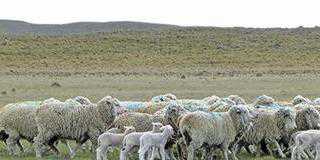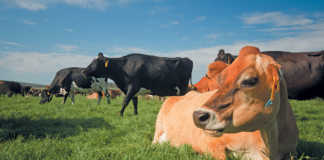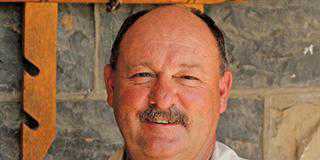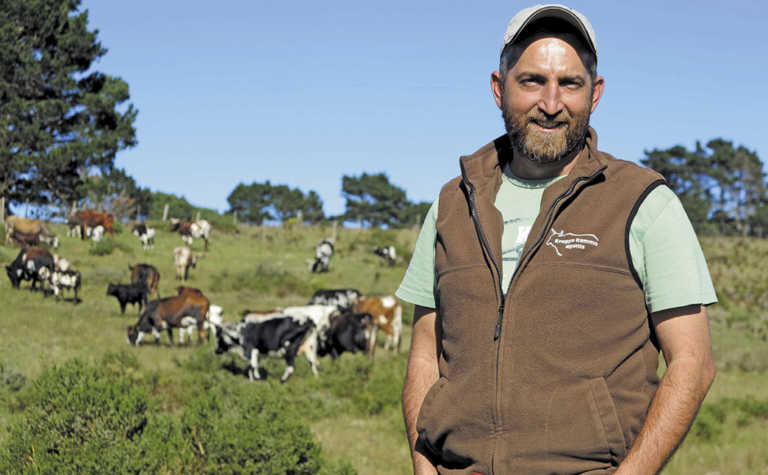
Photo: Keri Harvey
“I started running beef cattle on my father’s farm down the road 12 years ago,” recalls Neil Dawson, owner of Kragga Kamma Ngunis near Port Elizabeth in the Eastern Cape.
“Two years into farming, I read the book Grass-fed cattle by Julius Ruechel, and it gave me an insight into expanding by leasing smaller farms and consolidating cattle into bigger groups.”
According to Neil, the book is an excellent management tool, with advice on how to manage multiple small farms close to town, which is exactly how he farms. It even contains a section on how to win over landlords with differing personalities, a situation that Neil has to deal with.
Small beginnings
Neil started out with a number of breeds, and at the beginning had just two in-calf Nguni cows. Soon, however, the advantages of the indigenous Nguni over the other breeds became obvious.
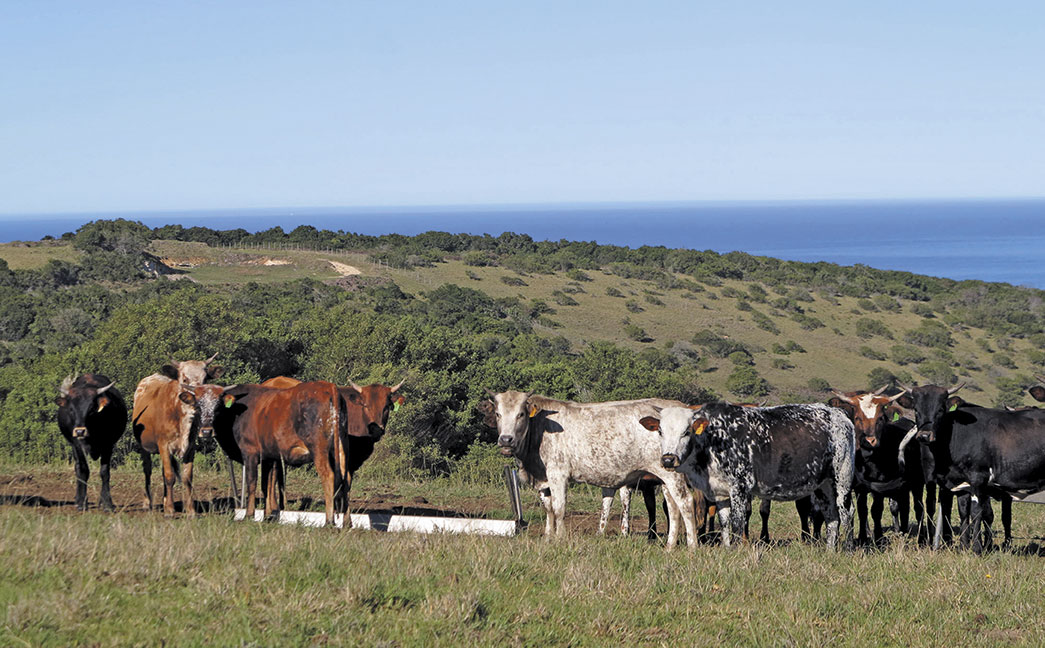
“We quickly realised that the input costs and tick-borne diseases on the other beef cattle were just too high,” he says.
Within four years, he had converted entirely to Nguni, and today the Kragga Kamma Nguni herd consists of 550 animals. The operation is managed by just four permanent staff and three casual labourers.
In the interim, Neil has become chairperson of the Eastern Cape Nguni Club and member of the South African Nguni Breeders’ Society.
Feeding
According to Neil, the area west of Port Elizabeth was once a dairy farming area, but has now mostly reverted to coastal veld. After starting out on his family’s 124ha farm, Neil now farms 1 400ha across nine farms, with an average carrying capacity of 1 LSU/2,5ha.
“Our family farm has old dryland pastures with a high carrying capacity, so the oxen are run there. We also have 150ha of old kikuyu pastures, while the rest of the land is coastal sourveld.”
The breeding cows receive supplementary feed consisting of protein and phosphate licks, depending on the season, while bulls and heifers are given a phosphate lick.
Oxen receive a mix of milled teff, brewer’s grain and molasses. Neil collects the brewer’s grain from two microbreweries in Port Elizabeth and the molasses from a rum distillery in the city.
“This definitely isn’t the usual diet for Nguni oxen! But that’s one of the advantages of living close to town; I can pick up a ton of brewer’s grain a week. It’s low cost and has all the required proteins.”
Choosing genetics
As a member of the Umsenge Breeders’ Group, Neil has access to a broad base of genetics, and has sourced many of his bulls from here. But he has also looked further afield.
“For me, it’s important to source cattle from sourveld areas to match my grazing conditions. If they come from areas with tick-borne diseases they’ll be resistant to these diseases too,” he says.
To complement the Kragga Kamma Ngunis stud, Neil also runs a commercial Nguni herd.
“It’s important to diversify, so you have multiple markets to sell into,” he stresses. “In South Africa, if you don’t have more than one avenue of marketing, you expose yourself to outside forces beyond your control.” These include weaner and beef price fluctuations, as well as environmental factors.
According to Neil, the Nguni is in great demand due to its good maternal traits, ease of handling, herd instinct, and resistance to tick-borne diseases. The fact that it is a low-input breed is yet another major advantage.
“You can cross Ngunis with a European breed and then supply feedlots, and you don’t have the inputs of running a pure European breed. So it just makes sense,” he explains.
The Nguni is also able to withstand the impact of climate change as it can adapt to various climatic conditions, and cows even calve during times of drought, according to Neil. Last year, Kragga Kamma Ngunis had a 91% conception rate and a 90% calving rate in both the commercial and stud herds.
“We breed for an animal that can produce A-grade beef off the veld at an early maturing age, and sell weaners from the commercial herd. Selection for the stud is focused on efficiency in the cows, so that they produce calves that are 50% of their weaning weight and can perform well on the veld.”
Neil looks for “good conformation, with depth and capacity that can handle the sourveld and produce beef with a carcass weight of between 180kg and 200kg at 19 to 20 months of age”.
Resistance to disease
Redwater, heartwater and gallsickness are the main tick-borne diseases in the area. However, once cattle that are introduced to the farms have built up resistance, they experience no problems.
In addition, Ngunis do not feed on the poisonous invasive plants that are found in the area, such as Lantana and inkberry. According to Neil, a farmer in the area can lose up to 20 cattle a year to these plants.
Neil vaccinates all his cattle with Supervac and Botuvax, which cover a broad spectrum of diseases and infections including botulism, anthrax and lumpy skin disease.
“We also dip cattle for ticks every two months. These input costs are low compared with those for other beef cattle [breeds] in this area.”
Market trends
According to Neil, feedlots tend to reject the Nguni, saying that the breed underperforms in this environment, and farmers have suffered as a result. However, Nguni farmers have persevered as they have a number of alternative options to supply to feedlots: purebred weaners, Nguni-European crossbred calves, and oxen.
Although Neil actively pursues new marketing opportunities for his Ngunis, much of his marketing takes place through word-of-mouth.
Social media is also a powerful marketing tool, he says.
“The big advantage of being so close to the city is that we’re also close to our markets, whether marketing to the abattoir or traditional markets. We’re close enough for clients to come and view cattle and select which they’d like. It’s also easy to reach the co-op, which is 5km away.
“We also have access to animal food sources we wouldn’t have if we were far away from the city, such as the residue from the microbrewery and rum distillery we use as cattle feed.”
The only significant negative is the danger posed by the high traffic volumes to any animal that escapes through a fence.
Turning to his leasing set-up, Neil admits there are difficulties that accompany the advantages.
“It’s a challenge going from farming on land you own to farming on leased land. Still, do I want to own land in light of the uncertainty around land reform and expropriation?
But there’ll soon come a time when we’ll outgrow our land, and then we’ll need to have a plan in place.”
The Future
“The plan is to produce the best possible beef and expand. Then we’ll look for bigger land to buy or rent-to-own. I don’t see us capping the operation at a certain level.
This thinking comes from hiring land; if we own a farm, it’ll have a limited carrying capacity, and if we then want to run more cows we’ll just lease more land. As long as it’s viable, we’ll keep at it and think outside the box.”
Phone Neil Dawson on 072 238 4425, or email him at [email protected].








